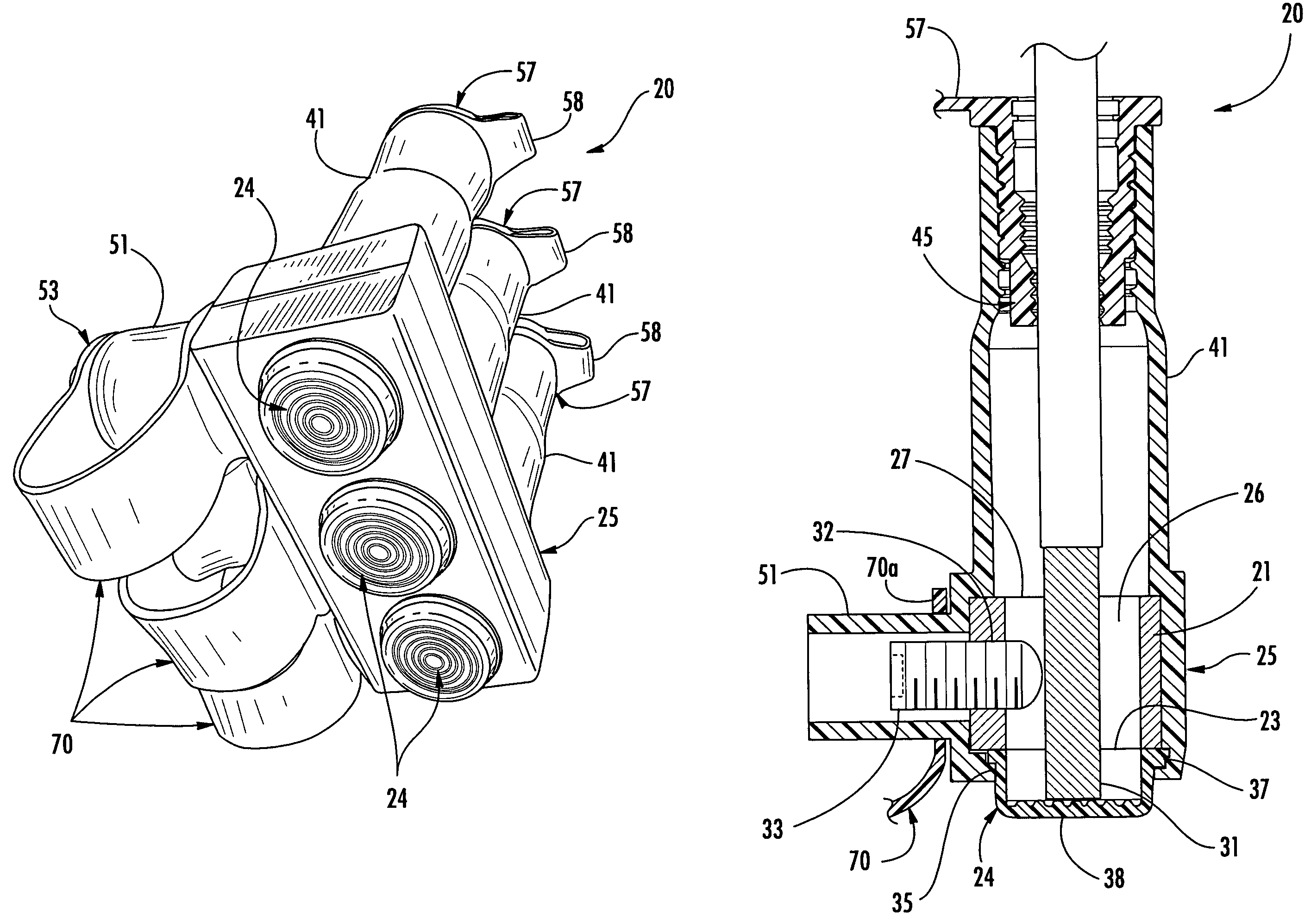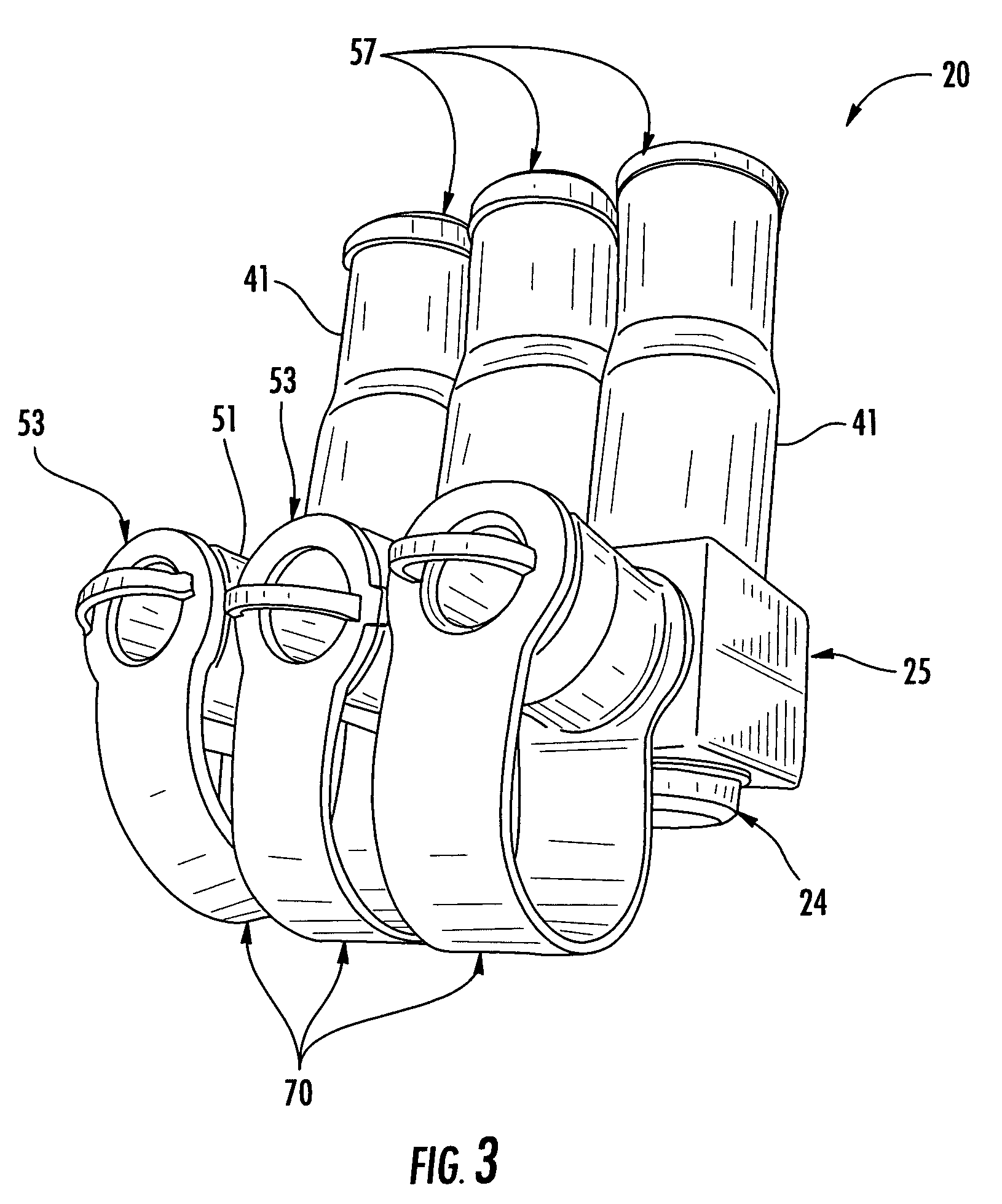Electrical connector including insulating boots and associated methods
a technology of electrical connectors and boots, applied in the direction of coupling device connections, coupling device details, securing/insulating coupling contact members, etc., can solve the problems of loss of connection work, less reliable connection, and insufficient seated of cable ends in blind holes
- Summary
- Abstract
- Description
- Claims
- Application Information
AI Technical Summary
Benefits of technology
Problems solved by technology
Method used
Image
Examples
Embodiment Construction
[0031]The present invention will now be described more fully hereinafter with reference to the accompanying drawings in which preferred embodiments of the invention are shown. This invention may, however, be embodied in many different forms and should not be construed as limited to the illustrated embodiments set forth herein. Rather, these embodiments are provided so that this disclosure will be thorough and complete, and will fully convey the scope of the invention to those skilled in the art. Like numbers refer to like elements throughout, and prime notation is used in alternate embodiments to indicate similar elements.
[0032]Referring now initially to FIGS. 1–7, an electrical connector 20 in accordance with the present invention is described. The electrical connector 20 is for a plurality of electrical cables and illustratively comprises an electrically conductive body 21 (FIG. 4), an insulating cover 25, and a plurality of windows 24 aligned with cable end viewing openings 23 (F...
PUM
 Login to View More
Login to View More Abstract
Description
Claims
Application Information
 Login to View More
Login to View More - R&D
- Intellectual Property
- Life Sciences
- Materials
- Tech Scout
- Unparalleled Data Quality
- Higher Quality Content
- 60% Fewer Hallucinations
Browse by: Latest US Patents, China's latest patents, Technical Efficacy Thesaurus, Application Domain, Technology Topic, Popular Technical Reports.
© 2025 PatSnap. All rights reserved.Legal|Privacy policy|Modern Slavery Act Transparency Statement|Sitemap|About US| Contact US: help@patsnap.com



